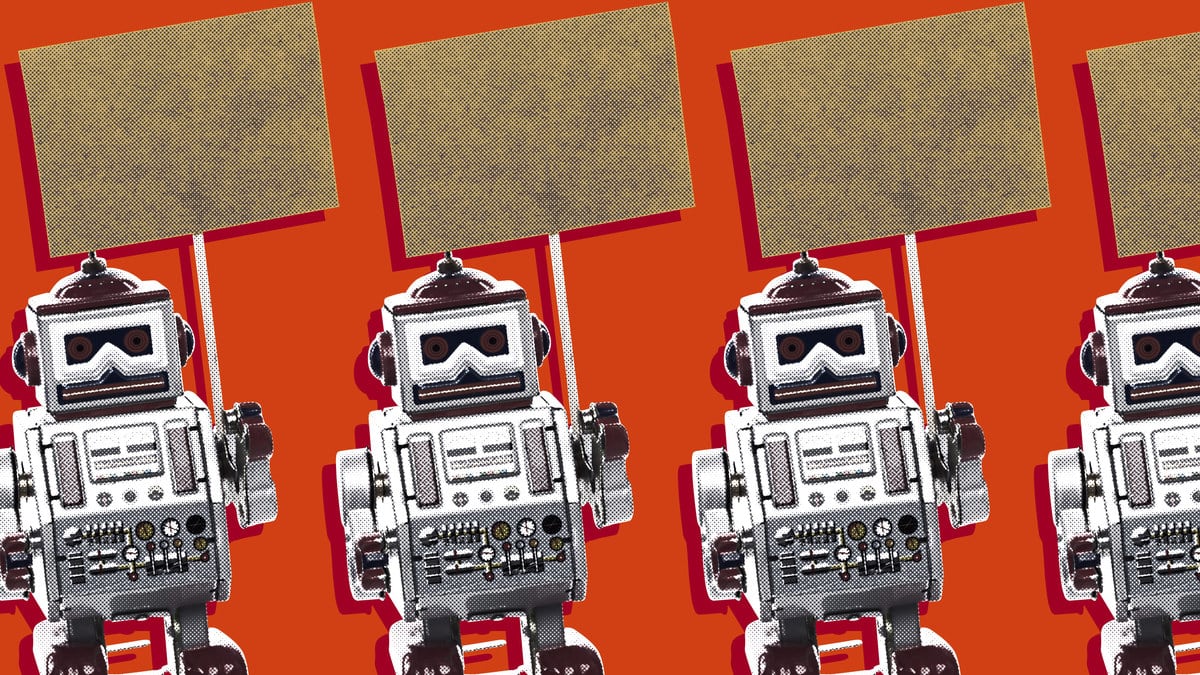Laid Back Surfers
Vegan Anti-Vaxxers
Out of Work Hairdressers
It reads like a collection of people, who would seem to have nothing to agree about. And yet, every one of these groups have taken to the streets in the last few weeks. Some were angry about yet another episode of police brutality, others because public health measures wouldn’t let them lead the lives they wanted, and still others because they saw an opening to leverage that power of anger.
Yet nothing about this strange coalition should be so strange, for it is just a taste for what will be the new normal for protest in America.
For the last several years, we’ve researched what will be the trends that will shape America’s future, gathering data on everything from automation trends to what’s next in crime. And the picture that emerged was that the anger that has recently played out everywhere—from America’s inner cities to its best beaches—won’t go away anytime soon.
Today’s protests are over shuttered tattoo parlors and police shootings. Tomorrow’s may be about whatever next fuels anger in a world in which we feel like we have less and less control. The consistent underlying driver, though, will be the incredible changes happening to that world, as it is literally rewired and remade around us.
What you are seeing around you is what it feels like to live through an industrial revolution, both its positives and negatives. The very same tech that has enabled more sophisticated policing has now enabled age-old egregious acts to be captured and shared. And while even more fabulous wealth is being created by the new tech remaking our industries and cities, many are being left behind. We are only at the start. For example, an Oxford University study of 702 different jobs found that 47 percent of total U.S. employment is at risk for replacement or reduction by robotics and AI within the next two decades. Maybe those researchers are wrong and it turns out to be only half that. And perhaps somehow all of those people find new jobs. Even then, the transition will be a challenging one, not just for them and their families, but for the nation.
Yet, as the writer Emma Grey Ellis put it, “economic concerns are where the ideology starts, not where it ends.” The next expressions of anger might be from today’s populism put on steroids or even entirely new political movements.
From AI surveillance and face recognition to robots able to do ever more blue- and white-collar jobs, each aspect of the new wave of technology means new tools of power, but also repression. It means shifting societal and economic roles, and new political, legal, and ethical debates without clear answers, all the while taking place in an America that is ever more divided. It makes for a potent mix for anyone who wants to stir the pot. At a U.S. intelligence agency conference tasked with predicting the world of 2035, Stanford professor Larry Diamond best framed it as we are “sitting on a volcano.”
For all that today seems unprecedented, there are historical parallels. The last industrial revolution saw the rise of the Luddite movement, craftsmen put out of work by the first factories who tried to fight back against change. They assassinated factory owners, smashed up equipment, and joined marches that often degenerated into pitched street battles. They were considered so threatening that the British Army, in fact, sent more troops to put down this insurrection than it deployed to fight the U.S. Army in the War of 1812.
What is notable, though, is that while the anger is real, the disparate groups gathering may not always be. Anyone can have a movement with the right algorithm or rework a legitimate cause’s narrative with the right infiltration and provocation. The run-up to the 2016 election offered a preview: when Russian disinformation campaigners spurred both pro- and anti-Trump groups to show up at the same engineered protest, or when alt right activists infiltrated a protest at a Trump hotel and held up a “Rape Melania” sign to shift the discussion away from Trump’s violation of the Constitution’s Emoluments Clause.
Today’s tactical-equipment wearing protesters at state legislatures and white nationalists showing up to smash storefronts at anti-racism protests are the latest iterations of such carefully coordinated “astroturf” movements. Replete with prearranged hashtags, the whole thing gets shared virally by algorithm-driven social media platforms, and both the news media and political entrepreneurs are offered a new “story.” It is just one aspect of the other paradox of these movements: to fight the future, they will use its very tools.
Just as bin Laden wanted the world to go back to the times of 632 AD, but wore a Timex, so too will the protesters against a world spinning too fast employ tech that was just recently science fiction. AI face recognition tech has been countered via makeup dazzle blocks that trick machine learning. Drones have been used to monitor protesters and to monitor the cops monitoring protesters.
Even what people see while demonstrating is then reshaped in new ways. AI-fueled social media platforms already steer us into information bubbles online, where the same event is somehow a protest against police brutality and an antifa takeover of America. Soon, the next generation of augmented reality (AR) glasses will make even this real world a malleable green screen. Allowing an icon or image to be projected onto what you see, AR means that different protest messages will be overlaid and taken away from the same event, tailored to that individual and their curated and influenced beliefs.
The result is the old lesson of protest made new: the most important battle will be one of narrative, just now with each side trying to expand their audience influence exponentially with a mix of viral moments. Imagine the “Tank Man” at Beijing’s Tienanmen Square uprising in 1989, but perhaps with a human standing off against a police riot-control bot.
As the Luddites and the Confederacy learned, once change is underway, it is impossible to stop cold, even if the underlying issues never go away.
Today, it means we need to gear up and get ready for a turbulent not just next few days, but decade. Most of all, though, we need to understand that each of us is a participant in all this, as we are the ultimate audience for these gatherings, no matter who is assembling or how they got there.
Dissent is fundamental to the human—and especially the American—experience. But get ready for it to enter the AI era.
August Cole and P.W. Singer are the authors of Burn-In: A Novel of the REAL Robotic Revolution. More at BurnInBook.com.







